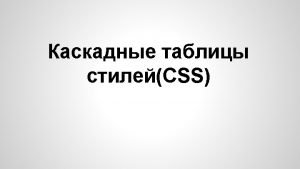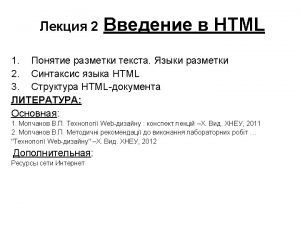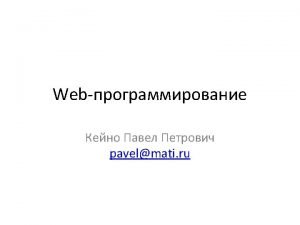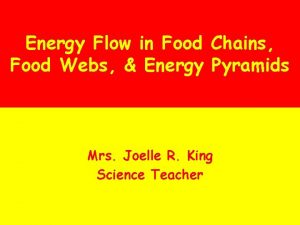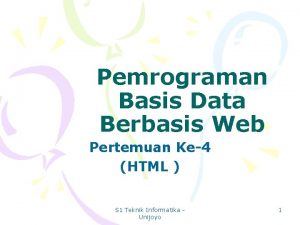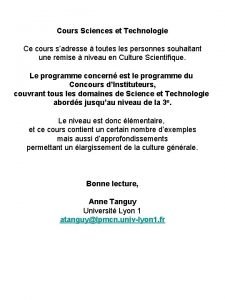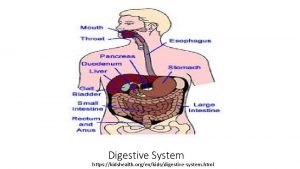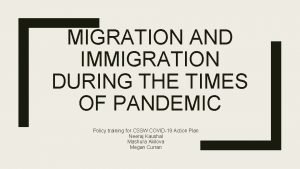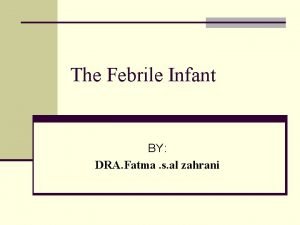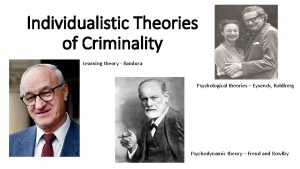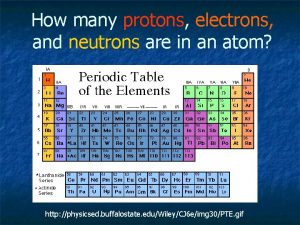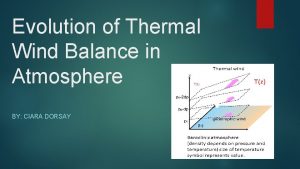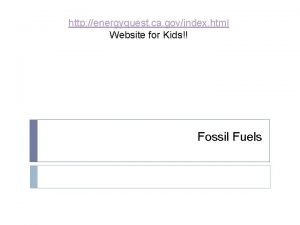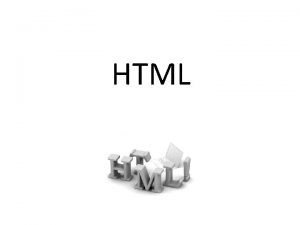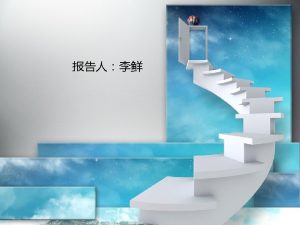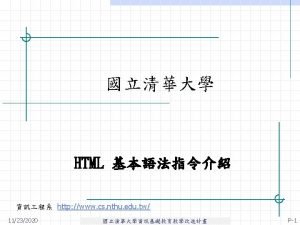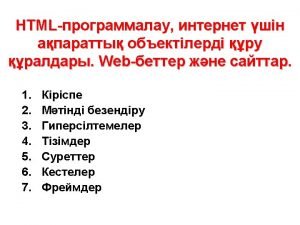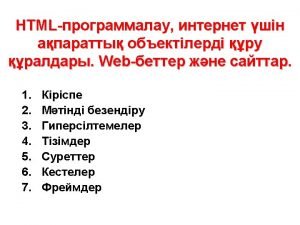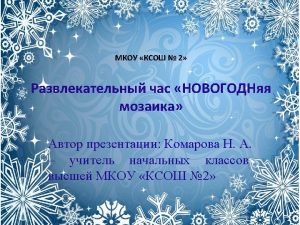http www energyquest ca govstorychapt er 08 html
















- Slides: 16

http: //www. energyquest. ca. gov/story/chapt er 08. html THE CARBON CYCLE http: //www. mhhe. com/ biosci/bio_animations/ MH 13_Carbon. Cycle_ Web/


What is carbon? n n Carbon is a very abundant element. It exists in pure or nearly pure forms – such as diamonds and graphite – but can also combine with other elements to form molecules. These carbon-based molecules are the basic building blocks of humans, animals, plants, trees, and soils, as well as fossil fuels( remains of plants and animals). Some greenhouse gases, such as CO 2 and methane, also consist of carbon-based molecules, as do fossil fuels, which are largely made up of hydrocarbons (molecules consisting of hydrogen and carbon).

A. What is the Carbon Cycle? 1. The Carbon Cycle is a complex series of processes through which all of the carbon atoms cycle. 2. The same carbon atoms in your body today have been used in countless other molecules since time began.

How is carbon cycled through the environment? n n The wood burned just a few decades ago could have produced carbon dioxide which through photosynthesis became part of a plant. When you eat that plant, the same carbon from the wood which was burnt can become part of you. The carbon cycle is the great natural recycler of carbon atoms.


B. Plants in the Carbon Cycle: 1. They are Producers. 2. They PRODUCE their own food. 3. In the carbon cycle, plants absorb (take in) carbon dioxide from the atmosphere and use it, combined with water they get from the soil, to make the substances they need for growth. 4. This process of photosynthesis incorporates the carbon atoms from carbon dioxide into sugars—the food the plants (producers) use for energy.


C. Animals and People in the Carbon Cycle: 1. They are Consumers. 2. They CONSUME other plants and animals n Animals, such as rabbits, eat plants & use the carbon to build their own tissues. n Other animals, such as the fox, eat the rabbit and then use the carbon for their own needs. 3. These animals return carbon dioxide into the air when they breathe, which is part of respiration. 4. When people burn fossil fuels, it is called combustion. 5. When animals die, the carbon is returned to the soil during decomposition.

D. Bacteria and Fungi in the Carbon Cycle 1. Bacteria and fungi are decomposers involved in the carbon cycle. 2. They break down organic material such as dead animals or plants. 3. They release carbon dioxide, as well as methane, to the atmosphere and soil.


E. What happens to the carbon from dead stuff? 1. Sometimes the decomposers don't break down organic material—all the living or once living stuff. 2. This organic material is made into fossil fuels over millions of years with the help of heat and pressure from the inside of the earth where it is buried. 3. The source of carbon in fossil fuels comes from the remains of plants and animals that died long ago. 4. These fuels—oil, natural gas, coal, are being dug out of the earth and used, returning the carbon to the carbon cycle.

When decomposers can’t get the job done, what happens to the carbon from dead stuff? Continued n Since the Industrial Revolution, humans have greatly increased the quantity of carbon dioxide found in the Earth's atmosphere and oceans. n Emissions from fossil fuel combustion account for about 65% of the additional carbon dioxide currently found in the Earth's atmosphere. n Humans have altered the carbon cycle through fossil fuel burning, deforestation (cutting down of trees), and land-use change, such as from farming to building homes.


Finally……. n The same carbon atom can move through many organisms and even end up in the same place where it began. n Thus, lies the fascination of the carbon cycle: The same atoms can be recycled for millennia!

Facts to Know!!! n n When we burn fossil fuels we put carbon dioxide back into the atmosphere. Too much carbon dioxide in the atmosphere can lead to an increase in the Earth’s temperatures, also known as global warming.
 Doctype html html head
Doctype html html head Doctype html html head
Doctype html html head Doctype html html head
Doctype html html head Html
Html Slidetodoc
Slidetodoc Tropic level food chain
Tropic level food chain @katochimotokidoari:http://work4unity.in/haicantik.html
@katochimotokidoari:http://work4unity.in/haicantik.html Http ://stsp.creteil.iufm.fr/article89.html
Http ://stsp.creteil.iufm.fr/article89.html Kids health digestive system
Kids health digestive system Http://metrocosm.com/global-migration-map.html
Http://metrocosm.com/global-migration-map.html @kuanlyna fatma:http://m.2265.com/down/132284.html
@kuanlyna fatma:http://m.2265.com/down/132284.html Index of http
Index of http Slidetodoc
Slidetodoc Tripartite personality
Tripartite personality How many protons are in o
How many protons are in o B) http://www.schoolguides.com/types_of_scholarships.html
B) http://www.schoolguides.com/types_of_scholarships.html Http://weather.uwyo.edu/upperair/sounding.html
Http://weather.uwyo.edu/upperair/sounding.html


